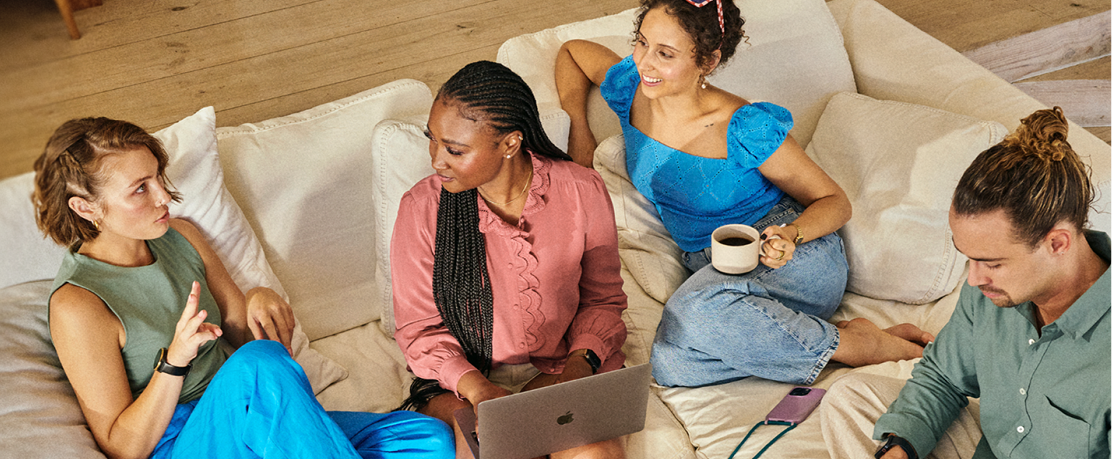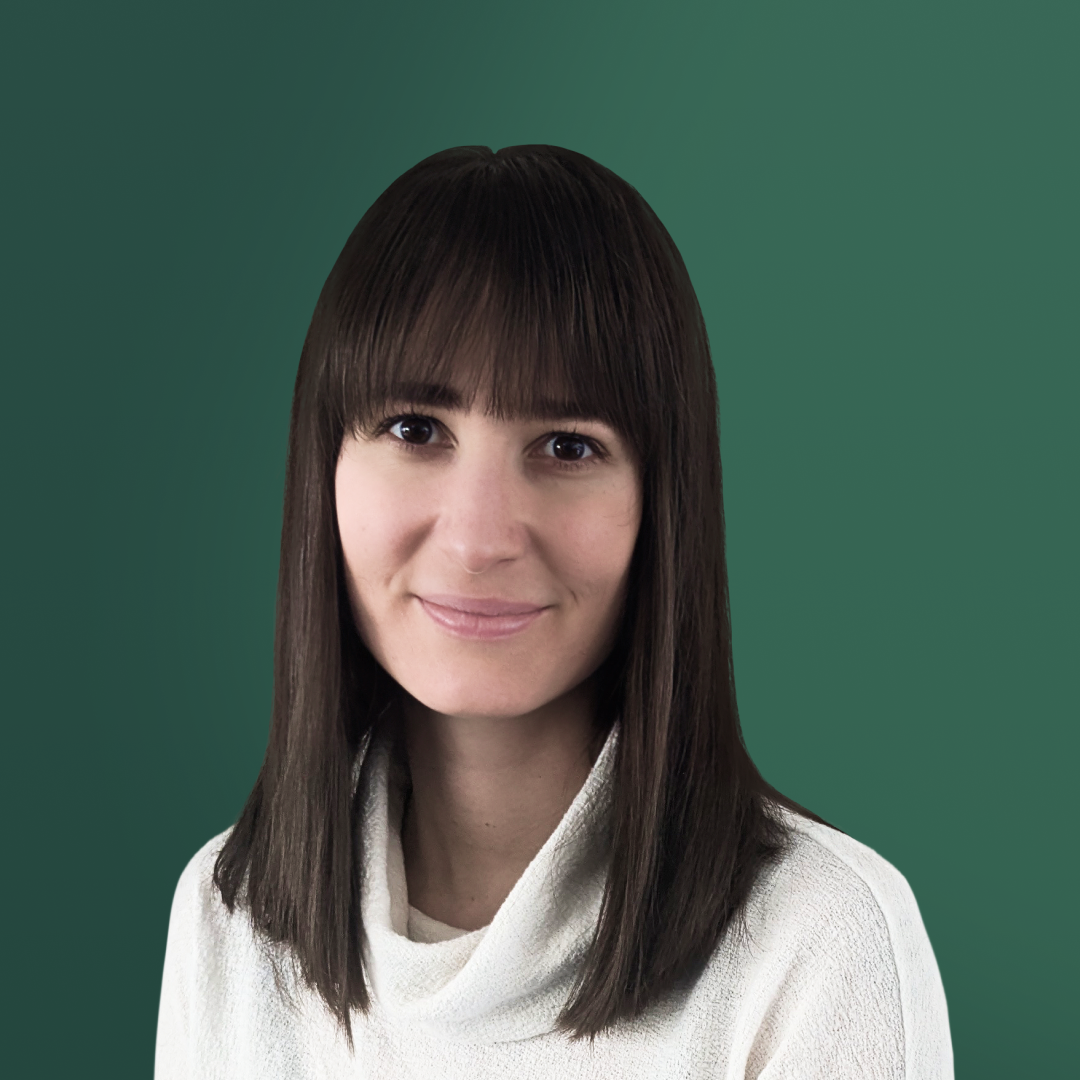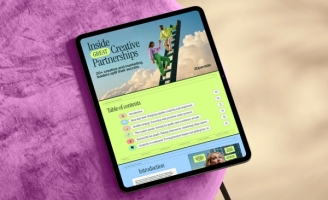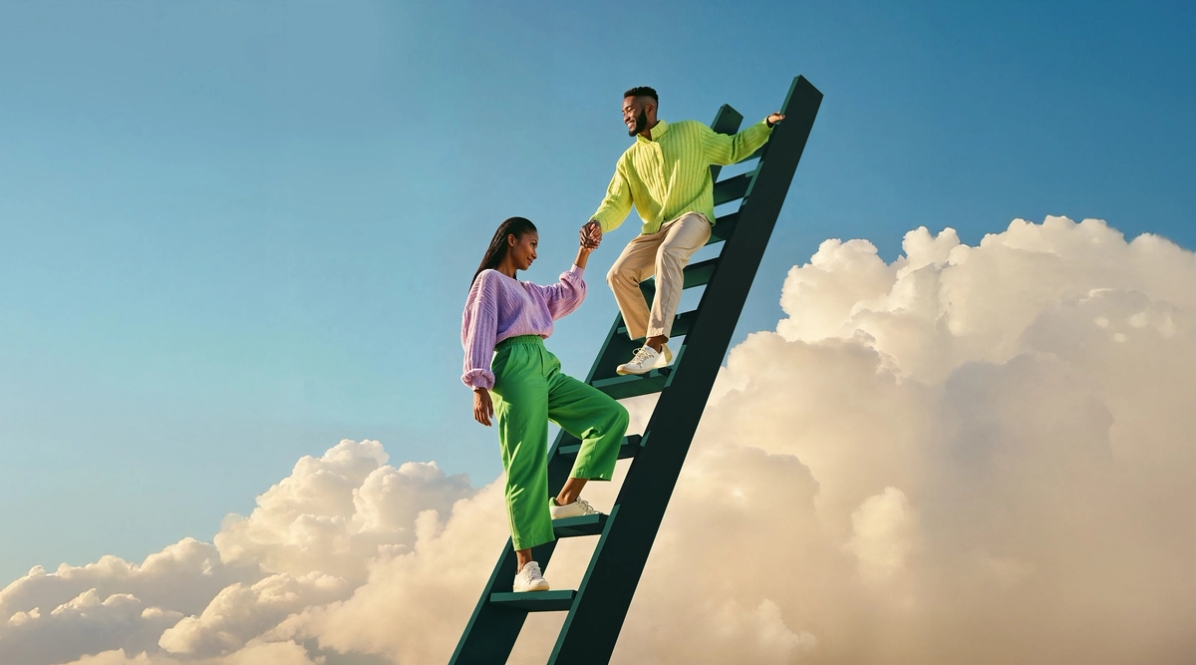Get off the conveyor belt: 22 leaders on the secret to great work
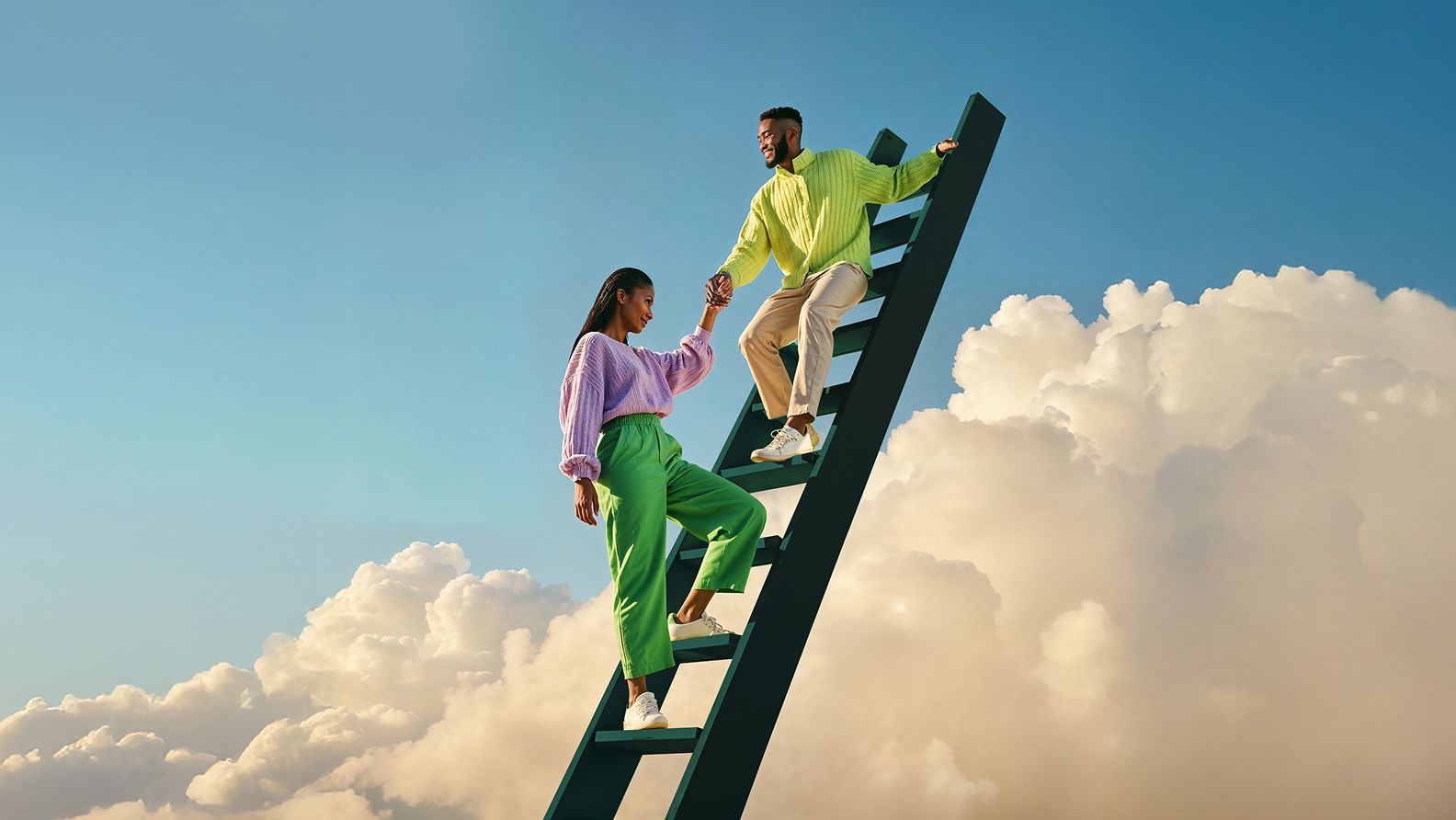
Assembly-lines are out. Real creative partnerships are in. In our latest guide, 22 top creative and marketing leaders unpack how great work really gets made—from bold ideas to buy-in.
“It can’t be an assembly line. You have to bake in collaboration—brainstorms, thought starters—before your jump to production. That’s where the best ideas come from.”
Kevin Branscum, Senior Director of Brand Marketing at Typeform, shared this thought when we interviewed him for our latest guide. And he wasn’t the only one. The concept of partnerships—true collaboration between marketers and creatives—came up over and over again as the lynchpin for any successful campaign.
That’s why we called the guide, Inside Great Creative Partnerships.
It digs into hard-earned, real-life lessons from 22 top creative and marketing leaders shipping great work, together. We’ve already spilled their number one secret. But there are many more big ones, like:
- The source of great ideas
- How to actually do more with less
- The code to quality at scale
- What wows and why
- How to get buy-in from top to bottom
...and of course, what role the robot in the room should (and shouldn’t) play.
Here’s a sneak peek of these secrets, courtesy of marketing and creative leaders at Wistia, Leonardo.Ai, Typeform, Booking.com, Twilio and yours truly, Superside. For the whole pot of tea, grab the guide.
The source of great ideas
No, it’s not ChatGPT. Though it can certainly play a role, which we’ll touch on in a sec.
But first and foremost, great ideas can come from everywhere. That really narrows it down, doesn’t it?
Before you bounce, consider what that really means: Being open to inspiration from every source, both internally from every person and department and externally from every brand and vertical. At Wistia, fostering an environment where great ideas can, and do, come from everywhere is one of the creative and marketing team’s secrets to standout campaigns.
The best ideas come from all over. We get a lot of inspiration from brands outside our industry. And we have a creative inspo channel in Slack where people from all over, not just the marketing team, can share examples of social posts, advertisements, anything related to creative to spark ideas across the team.

But Wistia’s Taylor Corrado, Senior Director of Brand Marketing, and Adam Day, Creative Director, didn’t just talk the talk. They walked the walk, sharing examples of SNL skits inspiring the format for a “live show” launching their annual State of Video Report and Hinge’s phonebook campaign sparking the idea for their own physical Webinar Guidebook.
These creative campaigns landed to the tune of thousands of downloads. Of course, figuring out which ideas will land is a whole other topic. Thankfully, Day and Corrado had some thoughts there too, starting with focusing on the best idea to achieve your goals while considering audience resonance.
The best idea is so subjective. What’s the best idea for the outcome you want? What’s the best idea for the goal?

Day went on to share simple frameworks for both sourcing and validating ideas, as well as advice for fostering an environment where creativity can thrive. The bottom line: Teams need to feel safe and supported to do their absolute best work.
Now as promised, let’s talk about AI.
Though ChatGPT may not be the source of all great ideas, it can expand your thinking, leading you down a path full of possibilities.
Jessie Hughes, Senior Creative Technologist at Leonardo.Ai, and Cristian Ginori, Marketing Strategy Manager at Superside, both agreed that rapid iteration and the expansion of possibilities AI offers is invaluable in the ideation process.
A lot of the point of generative AI is iteration. It’s having iterative, variable, constantly-evolving and changing imagery, which I find very helpful for improving or getting closer to a good idea.

But the key to unlocking AI’s value? Human input. Hughes leans into the happy accidents that arise when using AI tools in design, but knows when it’s time to refine and ensure the final aesthetic of an image aligns with the creative brief. Ginori does the thinking—shares structured information on audience, pain points, past campaigns, brand and more—to ensure AI’s output aligns with the business problem at hand.
It’s all about input. The way I see it, I’m the brain and AI is the hands. So now, what I focus on is being very precise about what I need, how I need it and how I frame it.

How to actually do more with less
How many times have you heard the phrase “do more with less” this year?
Has anyone ever explained how to… well… actually do that?
The creative and marketing teams at Typeform have some tangible advice. In addition to underscoring the importance of alignment, Tess Ramsey, Creative Operations Manager at Typeform, has built structured processes to scale sustainably: A tiering model that categorizes projects by complexity and creative involvement, and a point system to guide monthly and weekly planning.
Some kinds of projects we know don’t need a creative review—they can just have one stakeholder review and go out the door. Others might need full art direction. More complex creative work such as art direction often means we put more eyes on it from a creative or brand perspective.

While these systems help them scale, the real glue is the collaborative relationship between marketing and creative. Dalton Nascimento, Senior Paid Marketing Strategist at Typeform, knows the demands he places on the creative team are intensive, and does his best to prioritize high-impact work.
We really prioritize what we believe would have an impact instead of just requesting a lot of stuff for the sake of quantity.

Meanwhile, Dimitra Papastathi, Principal Brand Designer at Typeform, is embracing AI tools to help with the whole “do more with less” decree. But importantly, she sees these tools as an amplifier, not just an accelerator.
We try to use AI with intention. It’s not about doing things faster just for the sake of it. It should boost our creativity—not dictate it.

The code to quality at scale
Have you heard the phrase “fast is good, but thoughtful is better?”
Otherwise known as, “ASAP, but also perfect,” it captures the eternal balancing act (read: struggle) of creative teams.
So, is there a way for speed and scale to coexist with quality? Daniel Bell, Design Manager of Brand at Booking.com has cracked the code. And the clue’s in his title. In order to scale and ship thousands of high-quality visual assets around the world, Bell and his team have built rock-solid brand foundations.
The brand is our north star. The thing that everyone’s aiming for. It sets out the narrative of who we are and creative aims to match that. If we’re telling the story right, we’re hitting that consistency.

Bell broke down what those foundations look like at Booking.com, including their brand guidelines and creative principles, and shared how these constraints can actually spark creativity. The best example: Booking.com’s Muppet-forward Super Bowl ad starring the iconic Miss Piggy.
What wows and why
There’s no singular formula for breakthrough creative.
But if there were, it would include emotion, value and targeted formats.
Darren Suffolk, Creative Director of Video Services at Superside, emphasized the need to provide value in every interaction. But that value doesn’t need to be information. It can be emotional: A moment of levity or validation. In fact, the more your content moves, the more attention-grabbing it will be.
People will give you their time—on the bus, at lunch, between meetings—if what you’re showing is actually worth it. And if it moves, it grabs attention.

Meg Gowell, Director of Growth Marketing at Typeform, and Branscum, got more tactical, speaking to matching formats to funnel stages and thinking about all the different ways a campaign might manifest itself.
You have to keep your finger on the pulse of how people are consuming. Some formats work better at the top of the funnel for emotional impact—like video—and others are great for more technical content. It’s about matching the medium to the moment.

Once you’ve nailed your message and formats, make the most of the creative. Gowell shared the example of Typeform’s “Get Real” campaign. With a limited budget for ad spend, the team got scrappy, contracting 37 influencers to take a video-based survey and using their submissions both to gather more responses from followers and as content.
In this ‘do more with less’ era, we look at every initiative and ask: Is this something that I will be able to reuse or is this an isolated moment that I'm not going to be able to use again? Is this campaign something that will live on in some sense?

How to get buy-in from top to bottom
Making work that moves is half the battle. Maybe more than half.
The other half is getting buy-in, so you can focus on the work that matters.
Twilio’s Adam Morgan, VP of Brand, and Nicholas Kontopoulos, VP of Marketing, Asia Pacific & Japan, know a thing or two about selling a creative vision upwards and downwards. This duo combines masterful storytelling and a powerful brand-to-revenue model to build the trust, relationships and excitement needed to get company-wide buy-in.
It's about creating an excitement, a buzz, a sense of being able to walk into the room with your head lifted a bit higher and your shoulders back.

Both leaders emphasized the importance of knowing your internal audience. From there, Morgan’s practical next step to get leadership bought-in on a creative vision is putting together a presentation for his specific audience. At the end of the day, his goal is to elicit an emotional response and inspire trust.
When you say educating them, it’s about building trust and proving to them you’ve got this. You’ve got a vision. You’ve got a good plan.

Kontopoulos then takes Morgan’s vision and translates it into the “love language of sales in the field.” In its simplest form, that means tying creative initiatives to pipeline and revenue. Explaining creative in these terms helps in-market representatives understand how storytelling can expand conversations (and deal sizes). A perfect example: Twilio’s SIGNAL event in San Francisco where the sales team reported customers sensed a new energy due to the company’s rebrand, leading to increased deal sizes across the board.
Climb the ladder, collaboratively
Did you spot the throughline?
It takes two. Or rather, a team.
Great creative isn’t churned out on a conveyor belt. It’s sparked in brainstorms, scaled through alignment and amplified by internal buy-in. As every leader in this guide shows, real impact comes from real creative partnerships—when marketers and creatives think together, build together and win together.
But this was just a cup of tea. For a deeper dive into the concepts we skimmed over and lessons from even more leaders, get your copy of the full guide today.
Tessa is a Senior Content Marketing Manager at Superside with a background in conversion copywriting and B2B marketing for SaaS companies. As a publishing graduate and a digital marketing agency veteran with almost a decade of experience, she has a deep appreciation for the art of storytelling and the power of human emotion combined with creativity. You can connect with her on LinkedIn here.
You may also like these
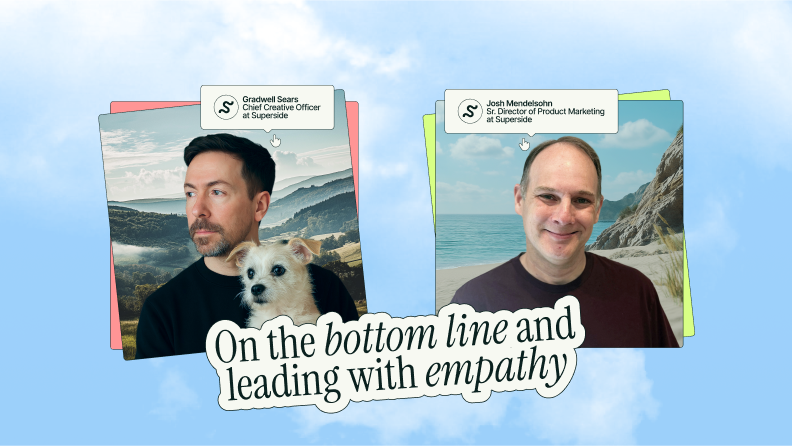
Results with heart: Inside Superside's empathy-fueled path to performance
Creative impact can’t be captured by a single metric or mood.But it is visible in results—and few understand this balance better than Superside's Gradwell Sears, Chief Creative Officer, and Josh Mendelsohn, Senior Director of Product Marketing. In our latest guide, Inside Great Creative Partnerships, Sears and Mendelsohn discussed how creative and marketing leaders must harmonize emotional resonance with measurable business performance to drive real impact.Spoiler: Results matter, but so do the people behind them. From ROI to vibes and empathy to partnerships that thrive, keep reading to see:Why creative is foundational to performance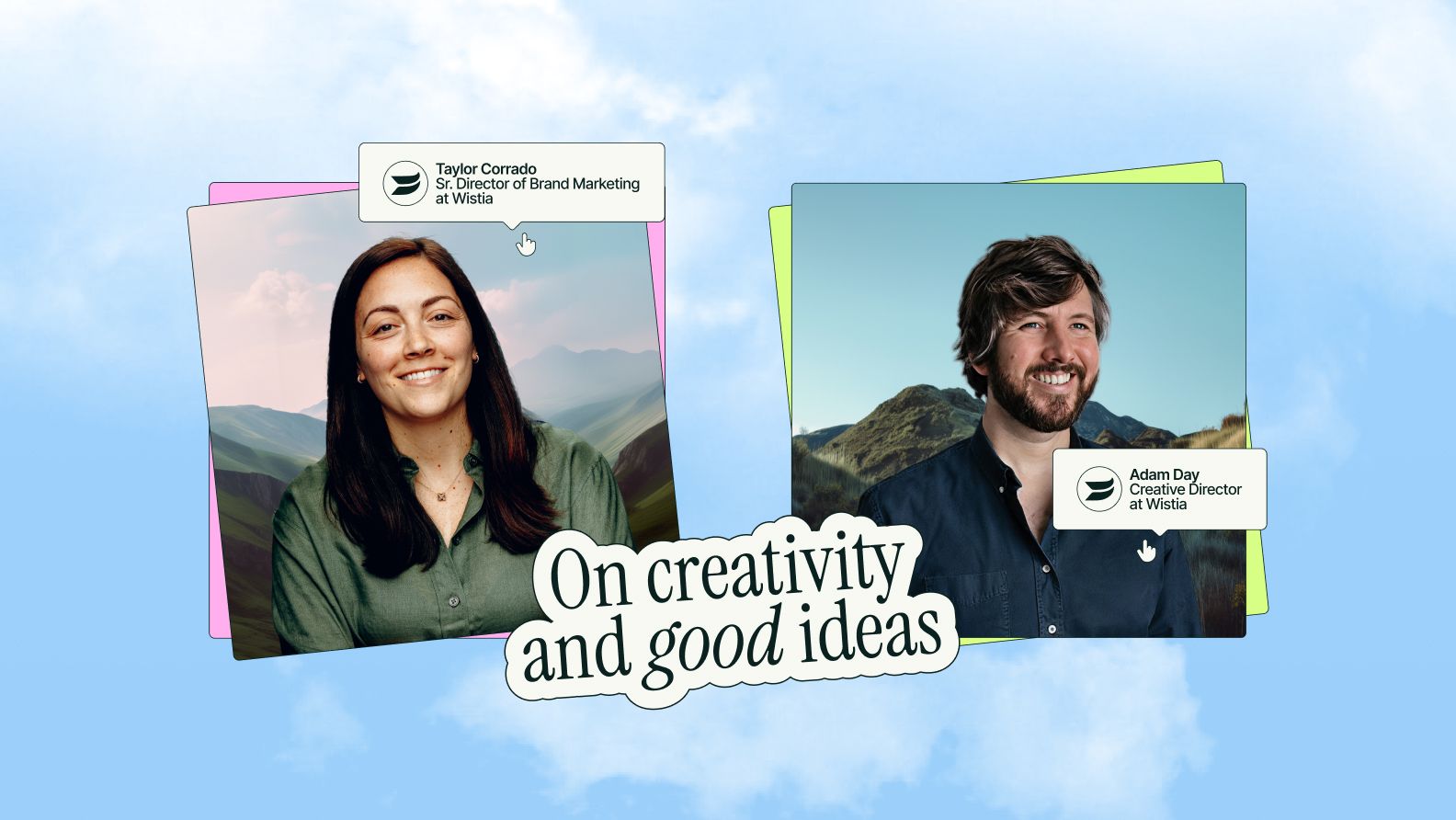
Open doors, unlock ideas: Inside Wistia's creative partnership
An SNL-inspired twist on a classic campaign.An analogue book that’s shipped over 700 copies around the world.A TikTok series narrated by a psychic raccoon.Okay, that last one’s made up. But one thing’s for sure, the creative and marketing teams at Wistia don’t just bring the creativity—they crank it to eleven.That’s why we had to speak with them for Superside’s latest guide, Inside Great Creative Partnerships. Wistia’s Adam Day, Creative Director, and Taylor Corrado, Senior Director of Brand Marketing, were kind enough to oblige and spill their secrets, including: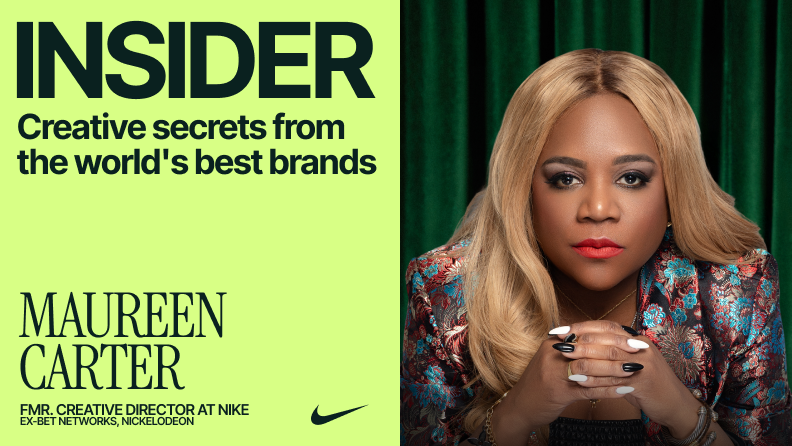
Designing culture: A masterclass in creative leadership
Can you think of anything more tempting than a “do not touch” button for a kid?Maureen Carter, former Creative Director at Nike, BET Networks and Nickelodeon, was the mastermind behind a lime green button on a kid’s app that turned into a cultural lynchpin—replacing elevator buttons in offices and shower controllers on cruise ships around the world. Though Carter would attribute the idea to Bella, one of her 10-year old design partners on the project.She won an Emmy for her Nickelodeon app: A testament to the very real results of her innovative, empathy-fuelled approach. And at Superside’s INSIDER summit, she unpacked that approach for us.Brimming with joy, wonder and play, Carter is a creative leader who'll leave you smiling and inspired. So, let’s walk through her vibrant journey and the many lessons she learned along the way, working with everyone from Tupac to Michelle Obama, and every brand from Deloitte to Nike.Not just one note: Becoming a multi-dimensional creative leader
